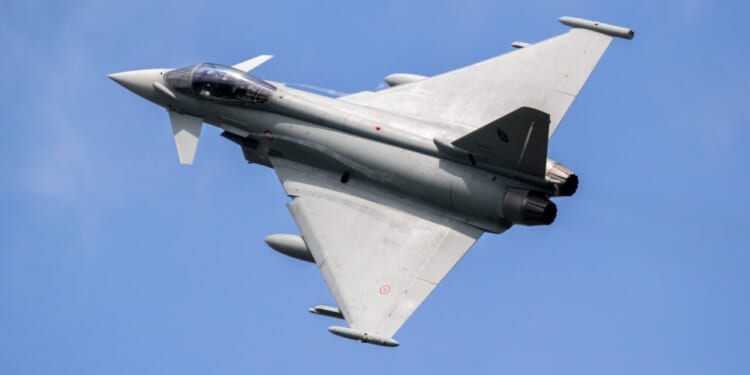Until the KAAN enters service, Turkey will rely on its incoming Typhoons to carry out its aerial strategy.
Turkey is bolstering its defense capabilities across the board. From building up its domestic production industry to procuring a wide range of military systems, including fighter jets, unmanned aerial vehicles, and missiles, Ankara has its eyes focused on strength. Earlier this month, Turkish officials revealed Ankara’s intentions to purchase 20 Eurofighter Typhoons in a deal with the United Kingdom. This $10.66 billion arrangement would greatly enhance Ankara’s aerial might. British prime minister Keir Starmer noted, “This landmark agreement with Türkiye is a win for British workers, a win for our defence industry, and a win for NATO security.” Starmer added, “At either ends of Europe, the UK and Türkiye are vital to tackling the challenges of our time and this will allow our Armed Forces to work even closer together as we deter threats and protect our national interests.”
Why Turkey Wants the Eurofighter Typhoon
In support of this effort, Turkish president Recep Tayyip Erdogan paid a visit to the Arabian Gulf States, where he said he was focusing on negotiations to purchase used Typhoon fighters from both Qatar and Oman. The Eurofighter Typhoon is produced by a consortium of BAE Systems, Leonardo, and Airbus for the UK, Germany, Italy, and Spain. Designed as an air superiority fighter, the Typhoon has remained in service for more than two decades and has earned a solid reputation. The highly agile aircraft features advanced composite materials, which contribute to its reduced detectability. The EJ200 engine powers the platform, enabling the aircraft to fly at a top speed of over Mach 2.0 (times the speed of sound). In terms of armament power, the Typhoon is quite lethal. According to the platform’s Airbus manufacturer, the Typhoon can carry a vast array of ordnance within its 13 hardpoints, including air-to-air missiles like the AIM-120 AMRAAM, air-to-ground munitions like the Storm Shadow cruise missiles, and anti-tank missiles.
The KAAN Fighter
While the incorporation of 20 Typhoons would certainly elevate Turkey’s aerial capabilities, the nation is determined to introduce its indigenously made KAAN fighter series in the near future. With advanced internal weapons, networked drone control, and ground attack functions, the KAAN will host similar capabilities to its fifth-generation counterparts, including the F-35 Lightning II series. The KAAN’s prototype was conceptualized in the early 2000s, after Ankara’s Defense Industry Executive Committee opted to design, construct, and introduce a homegrown air-superiority jet series. Turkey was initially a part of the Joint Strike Fighter’s co-development contingent but was ultimately nixed from the program for violating US law after procuring Russia’s S-400 air defense system. Many of the exact specs and details pertaining to the upcoming fighter series remain under wraps; however, the KAAN’s maiden flight was reportedly notable. According to Simple Flying, the Turkish prototype reportedly flew at a top speed of roughly 255 miles per hour, reaching an altitude of 8,000 feet.
Until the KAAN officially enters service with Ankara, Turkey will rely on its incoming Typhoons to carry out its aerial strategy.
About the Author: Maya Carlin
Maya Carlin, National Security Writer with The National Interest, is an analyst with the Center for Security Policy and a former Anna Sobol Levy Fellow at IDC Herzliya in Israel. She has by-lines in many publications, including The National Interest, Jerusalem Post, and Times of Israel. You can follow her on Twitter: @MayaCarlin. Carlin has over 1,000 articles published over the last several years on various defense issues.
Image: VanderWolf Images / Shutterstock.com


















